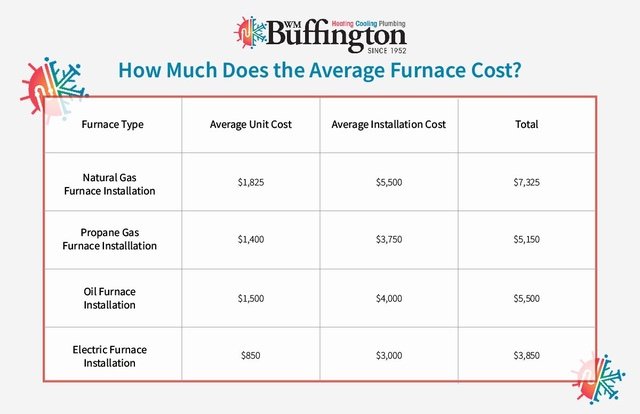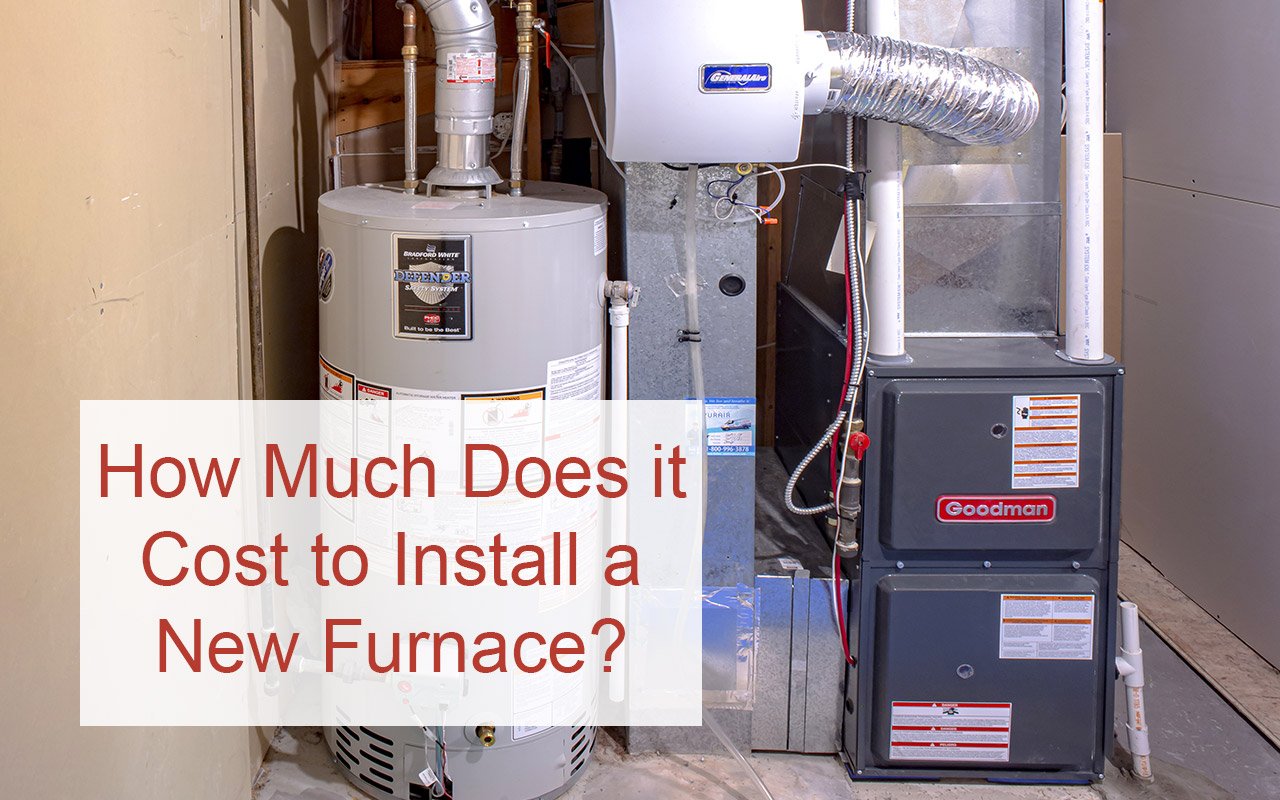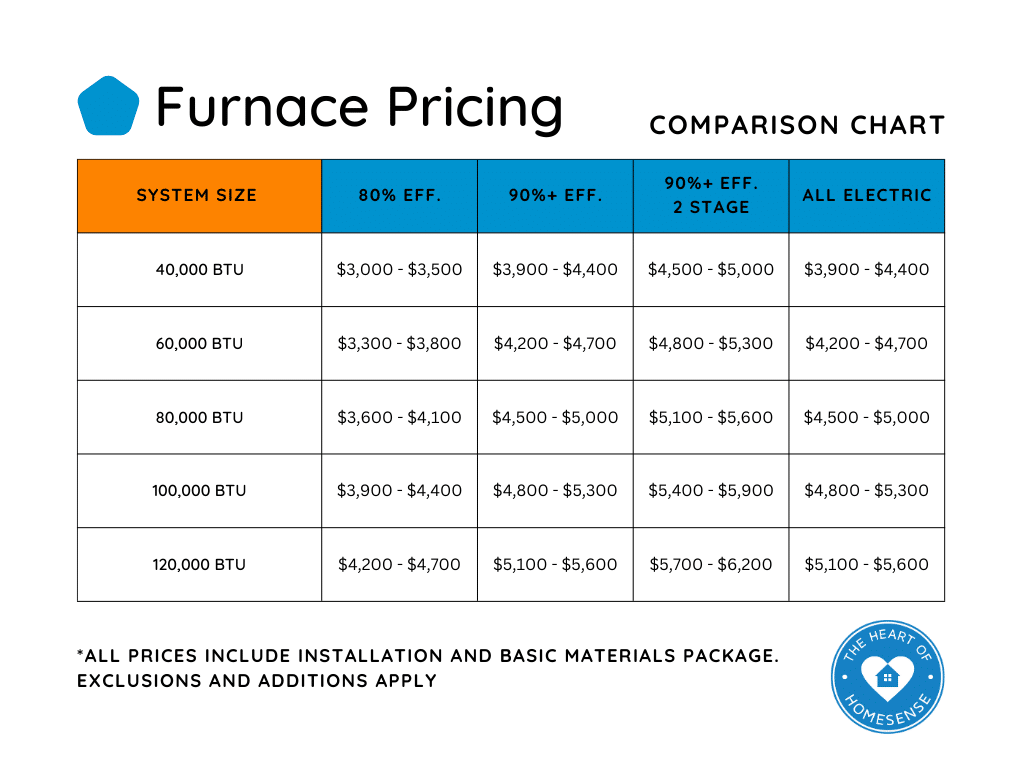Replacing a furnace can be a significant expense. Costs vary depending on several factors.
Understanding these can help you budget wisely. Furnaces play a crucial role in keeping your home warm. Over time, they wear out and need replacement. The cost of replacing a furnace depends on the type, brand, and installation requirements. Local labor rates also influence the final price.
Many homeowners find themselves wondering about these costs. Knowing what to expect can ease the stress of such a big decision. It’s important to consider energy efficiency and long-term savings when choosing a new furnace. Researching your options can ensure you make an informed choice. This blog will guide you through the factors affecting the cost of replacing a furnace. By the end, you’ll have a clearer picture of what to budget for this essential home upgrade.
Introduction To Furnace Replacement Costs
Creating a budget is very important. It helps in planning costs. Furnace replacement is a big expense. Without a budget, costs can go up quickly. You need to know how much you can spend. This avoids surprises later. Planning helps in making good choices. It keeps expenses in check. Always set a budget first. This way, you are prepared.
Many things affect the cost of a furnace. Type of furnace is one factor. Gas and electric ones have different prices. Size of the house also matters. Bigger houses need bigger furnaces. Installation fees add to the cost. Some areas charge more for labor. Brand choice can make a difference too. Well-known brands might cost more. Always check all these factors before buying.

Credit: homeguide.com
Types Of Furnaces
Gas furnaces are common in many homes. They use natural gas to produce heat. This type can be cost-effective in areas with low gas prices. Installation costs vary. Expect to pay between $2,000 and $5,000. Some models are more efficient than others.
Electric furnaces use electricity to heat your home. They are often cheaper to install than gas types. Prices usually range from $1,000 to $3,500. They may cost more to run if electricity rates are high. Efficiency can be a benefit, as these furnaces often waste less heat.
Oil furnaces require fuel oil to operate. These furnaces can be expensive upfront. Installation costs range from $2,500 to $6,000. Oil prices can affect running costs. They can be efficient and provide strong heat output. Maintenance may be needed more often.
Factors Influencing Costs
The size of your home matters a lot. A bigger home needs a bigger furnace. Bigger furnaces cost more than smaller ones. You pay more for a bigger furnace. It’s simple math. A small home might need a small furnace. Small furnaces cost less.
Energy-efficient furnaces save money over time. They cost more upfront. But, they use less energy. This can lower your bills. Look for a furnace with a high efficiency rating. It helps the planet too. Saving energy is good for everyone.
Different brands and models have different prices. Some brands are more expensive. Known brands might cost more. But they often last longer. Check reviews before you buy. A good model can be worth the cost.
Installation And Labor Expenses
Professional installation ensures your furnace works safely and efficiently. Hiring experts can cost between $500 and $2,000. This price depends on your location and furnace type. Complex installations may require more work, increasing costs. Experts also handle permits and inspections. They ensure everything meets local codes. This adds to overall expenses.
DIY installation might save money. But it requires skills and tools. Incorrect installation can lead to safety risks. It might void the warranty. Proper tools and knowledge are essential. A small mistake can cost more later. Sometimes, it’s better to hire a professional. Think about safety and long-term benefits before choosing DIY.
Additional Components
Replacing a furnace can involve extra costs for additional components like thermostats, ductwork, or air filters. These elements ensure the system works efficiently. Consider these expenses when budgeting for a furnace replacement.
Thermostat Upgrades
Upgrading a thermostat can improve energy efficiency. Smart thermostats are popular. They allow remote control via apps. Basic models cost less. Advanced models are pricier. Installation fees vary by complexity. Professional installation ensures proper function. DIY can save money but requires skill. Consider compatibility with your furnace. A modern thermostat may reduce energy bills. Choose wisely for long-term savings.
Ductwork Modifications
Ductwork modifications affect air flow. Proper ducts ensure efficient heating. Old ducts may need repairs. New ducts might be necessary. Costs depend on duct size and length. Professional inspection is recommended. Leaky ducts can waste energy. Sealing and insulating ducts save money. Ductwork impacts heating system performance. Quality materials last longer. Ensure ducts are properly sized and installed.

Credit: wmbuffingtoncompany.com
Regional Price Variations
Furnace costs can vary a lot. In cities, prices are higher. More people live there. More demand means higher costs. In rural areas, it’s different. Fewer people mean less demand. This makes the prices lower.
Weather affects furnace prices. Cold regions need stronger furnaces. These furnaces cost more. Warm areas need simple ones. Simple furnaces are cheaper. Also, cold areas use furnaces more. This affects their lifespan. Replacement happens sooner in cold places.
Cost-saving Tips
Buying a furnace in winter can be costly. Many sellers offer seasonal discounts during off-peak times. Summer might be the best time to buy. Prices often drop when demand is low. Look for special offers in spring or fall. Save more by buying early.
Manufacturers sometimes give rebates for energy-efficient models. These rebates can reduce the total cost. Local governments might offer incentives too. Check for programs that support green energy. These incentives can help lower expenses. Always ask the seller about available rebates. It’s a smart way to save money.

Credit: wmbuffingtoncompany.com
Long-term Financial Considerations
Choosing a new furnace can save money. Modern furnaces use less energy. They work more efficiently. This means lower bills each month. Over time, these savings add up. You might save hundreds in a year. That’s a lot of money. Think about the long-term benefits. A good furnace pays for itself.
Keeping a furnace in good shape is important. Regular maintenance prevents big problems. Small fixes are cheaper than big repairs. Plan for yearly check-ups. These check-ups cost less than major fixes. A well-maintained furnace lasts longer. Less chance of sudden breakdowns. This means fewer unexpected expenses. A little care goes a long way.
Conclusion
Understanding furnace replacement costs can help you plan better. Prices vary due to factors like size, type, and installation. Get quotes from local professionals to find the best deal. Ask questions. Ensure services include warranties and maintenance options. Budget for unexpected expenses.
Consider energy efficiency for long-term savings. Research thoroughly. Make informed decisions. Avoid last-minute stress. A well-chosen furnace brings comfort and peace of mind. Investing wisely ensures a cozy home for years. Take action now. Your home deserves the best warmth and care.
I’m Robert M. Payne, a passionate enthusiast for turning houses into dream homes. With a knack for DIY projects and a keen eye for design, I’ve dedicated myself to sharing my knowledge and experiences in the realm of home improvement.
As a seasoned homeowner and avid DIYer, I understand the challenges and joys that come with transforming living spaces. Through Myhomemyworld, I aim to inspire and guide fellow homeowners on their journey to creating spaces that reflect both functionality and style.
Cheers to creating spaces that truly feel like home.
Connect with me in facebook

